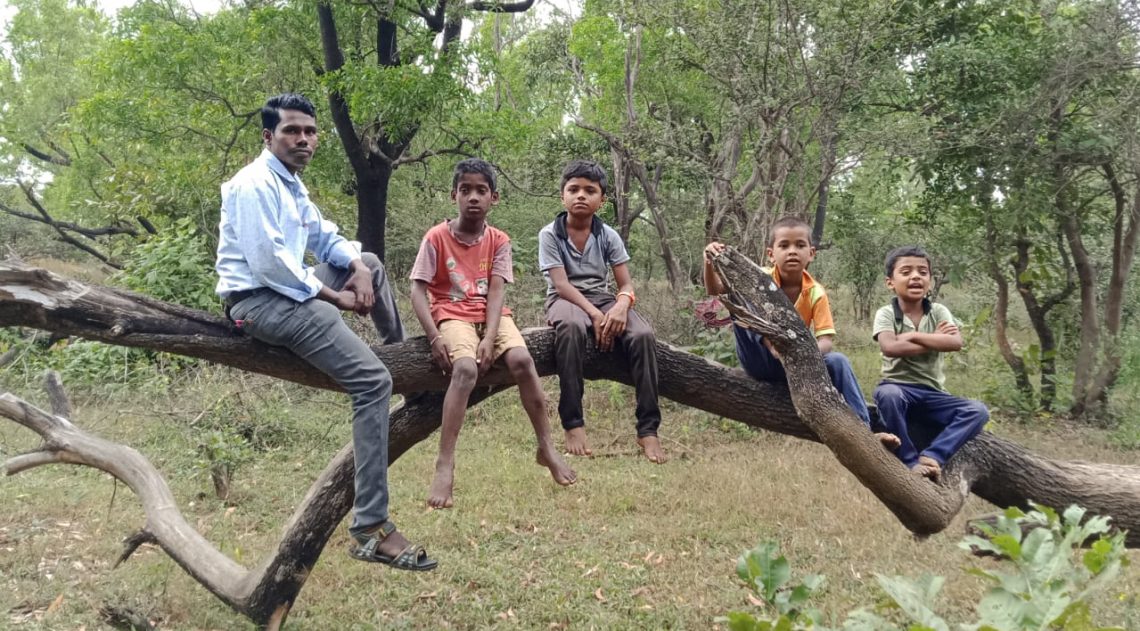
The Chandoli National Park – Through the Eyes of a Teacher
A firsthand account from a teacher who teaches at a school within Maharashtra’s Sahyadri Tiger Reserve.
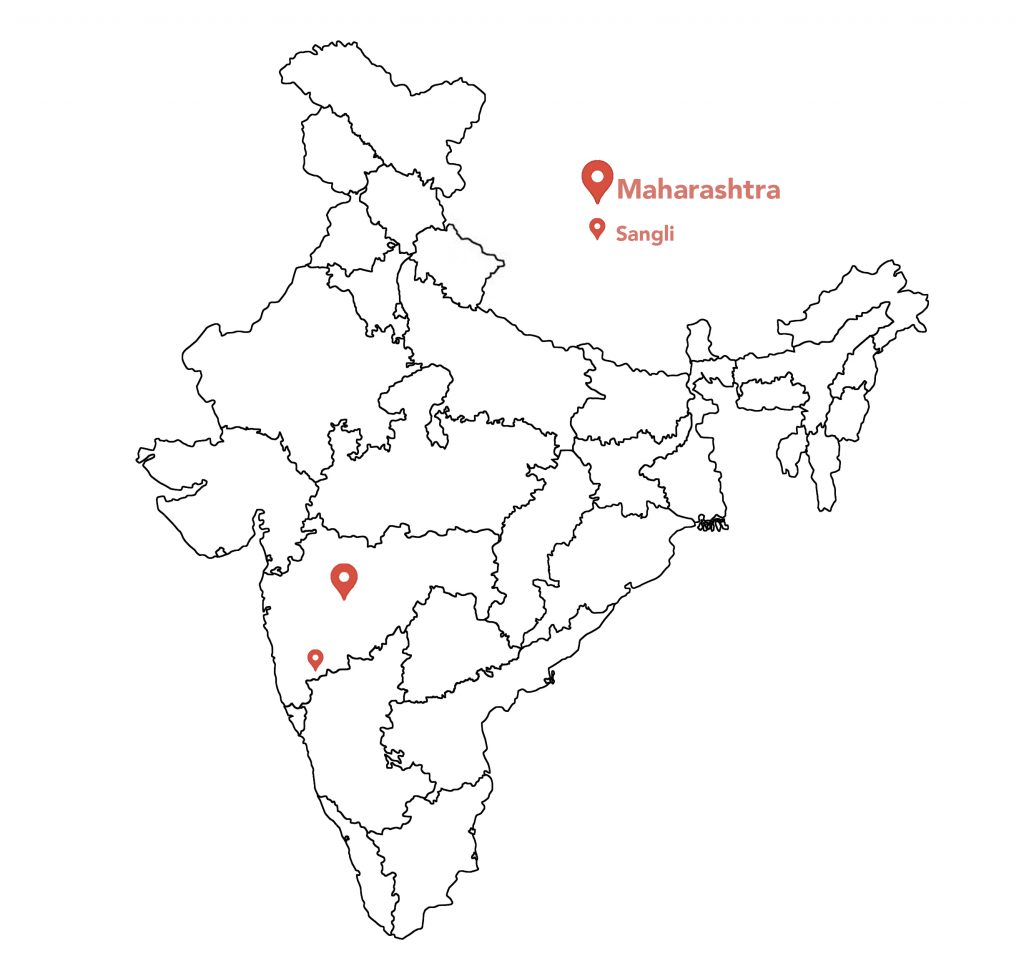
Storyteller : Mahadu Chindhu Kondar
Himal Prakriti Storyteller
Sangli District,
Maharashtra
Read this story in Hindi
One summer morning, on my way to school though the Chandoli National Park, I saw a leopard in the middle of the road of the basking in the morning sun. It was terrifying to see the leopard so close and when it growled, it sent a shiver down my spine.
I raised my hands and shouted out loud, “Ho…ho….ho!”
The leopard jumped and disappeared into the thick bushes without causing me any harm. But there was another incident in which I saw a calf injured in a leopard attack. It was the beginning of the summer, and I was teaching 1st and 2nd grade students.
Suddenly, I heard people shouting, “Bagh… bagh!”
I rushed to the school verandah and saw a two-and-a-half-year-old cow calf, bawling and running here and there as if in confusion. Its face was soaked in blood. A farmer and some village folks were following the calf. I enquired what had happened and found out that a leopard had attacked the it.
Arriving in Chandoli
I remember my first day in the forest of Chandoli as if it were just yesterday.
On a rainy morning of September 2019, I arrived in Manadur, a small village in the Sangli district, around 390 km away from my native village in the Ahmednagar district in Maharashtra. I was excited yet anxious. My dream of becoming a primary teacher in a school after completing my Diploma in Education had finally come true after years of struggle and hard work. I had been appointed as a Shikshan Sevak (temporary/contract teacher appointed by the Maharashtra government) for a fixed monthly salary of Rs 6000. But I had to teach in the remote Dhangarwada Khundlapur village located in the hilly area of the Nagbhumi Shirala taluka of Sangli, a village right inside the Chandoli National Park!
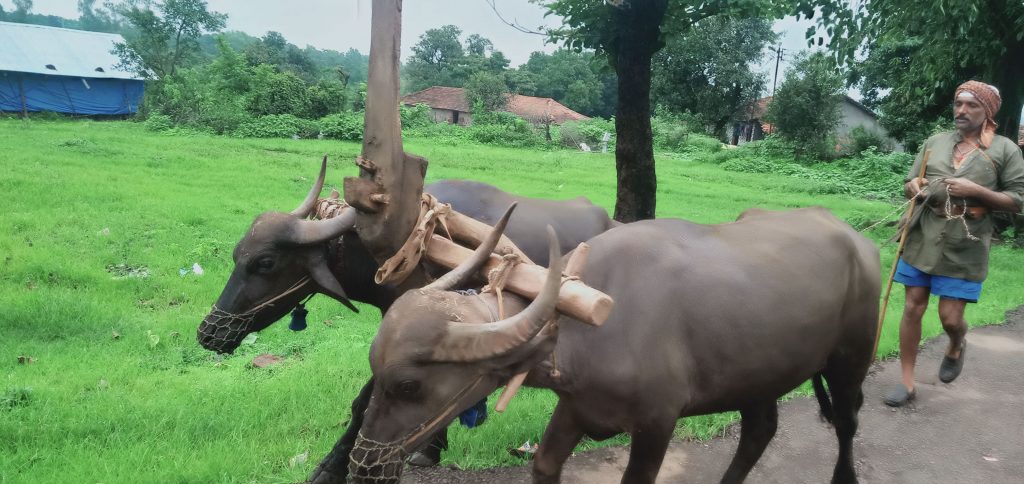
After reaching Manadur, I approached another person who had also been newly appointed as Shikshan Sevak. We borrowed a bike from a school staff member in Manadur and set out together in search of the school in Khundlapur, about 10 km from Manadur. We went just a little ahead and found ourselves amidst the dense forest. Heavy and incessant rains and the winding road made it impossible to see anything clearly. Khundlapur, the village where the school is located, was nowhere in sight. We kept asking passers-by and they kept telling us that Khundlapur was still far off. We left Manadur at 6 a.m. and we eventually reached the school in Khundlapur with great difficulty at 9 am!
The school in this small village had walls made of stones and clay. The walls were not painted and it hardly looked like a school. I have spent my whole life in a village and have experienced rural life, but what I saw in front of me was far different and I found it a lot more challenging. Moreover, some people told me that sightings of wild animals on the way from Manadur to the Khundlapur school were quite common. I realized that I would have to face all sorts of challenges if I were to spend a few years working here, and it made me anxious.
To calm my nerves, I reminded myself of the famous words of a saint: Thevile anante taise chi rahave, chitti aso dyave samaadhaan. (Be as the lord meant you to be. Let your mind be satisfied and content).
During my next few days in Khundlapur as a Shikshan Sevak imparting education to kids in that remote area, I got the opportunity to observe the Chandoli region closely. I mingled with the people in Manadur and Khundlapur and learned, experienced and realized a lot while staying in this paradise-like Chandoli region. Before I knew it, my fear and anxiety were replaced by fascination and curiosity about Chandoli, its wildlife, and the people who call Khundlapur their home.

The Chandoli National Park
Chandoli is one of the largest national parks in Maharashtra spread over an area of 317.67 sq km in 4 districts: Sangli, Satara, Kolhapur and Ratnagiri. Chandoli was initially declared a wildlife sanctuary in 1985, and later in 2004, it was given the status of National Park. Since the dense forest of Chandoli is the habitat of tigers, Chandoli National Park became part of the “Sahyadri Tiger Reserve” in 2010 to protect and conserve tigers. Sahyadri Tiger Reserve is the only tiger reserve in the Western Ghats. Chandoli National Park and Koyna Wildlife Sanctuary, spread across the Sangli and Satara districts are part of the Sahyadri Tiger Reserve and have been declared as World Heritage Sites by UNESCO.
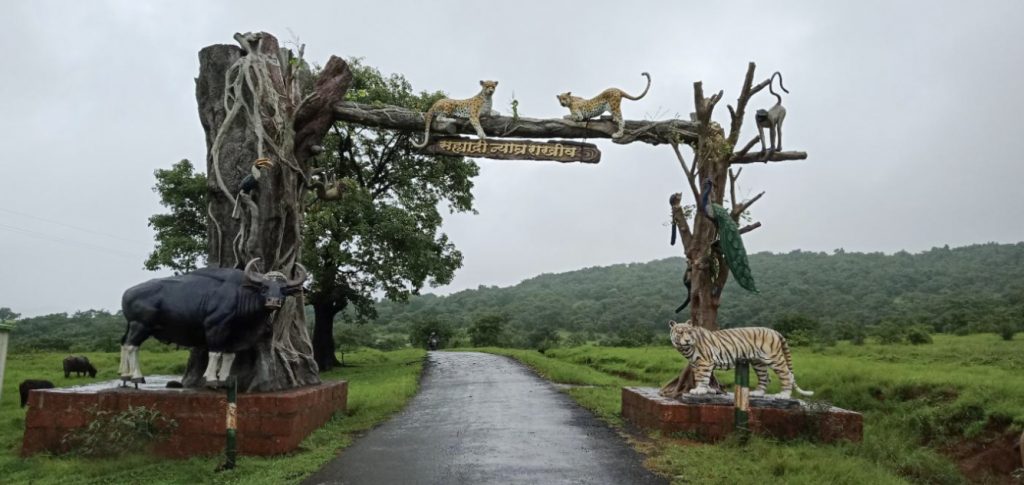
Home to numerous species of plants, animals and birds, Chandoli National Park is the heart of Sahyadri or the Western Ghats, a mountain range that is considered one of the 8 biodiversity hotspots in the world. Maharashtra’s state animal and bird – giant squirrel (Shekru) and yellow-footed green pigeon (Hariyal) – reside in the Chandoli sanctuary. A variety of colorful butterflies, birds, herds of wild buffaloes, leopards, pheasants, sambars, sheep, wild dogs (Kolshind), pangolins, mongooses, rabbits, wild boars, wild boars, monitor lizard, deer, bears, pythons and other snakes can be seen while traveling through the meandering paths of Chandoli. Any of these creatures may suddenly appear in front of you while traveling through Chandoli!

Wildlife in Chandoli. Photos: Dhaklu Gawde 
Wildlife in Chandoli. Photos: Mahadu Chindhu Kondar
The Natural and Cultural Heritage of Chandoli National Park
The Chandoli region has a lot to offer to wildlife and adventure lovers. The Manadur, Varnavati Vasahat, and Ukhlu (Shahuwadi-Kolhapur) villages are the starting points for tourists visiting the Chandoli area. These villages are located at the base of the Varana Dam (also called Chandoli Dam) built on the Varana River. Starting from these villages, you can go right up to Zolambi Sada (plateau), around 25-30 km away, for breathtaking views of the entire Chandoli region. The Forest Department has made arrangements of mini-buses for commuting in the area to facilitate tourism and avoid inconvenience to tourists.
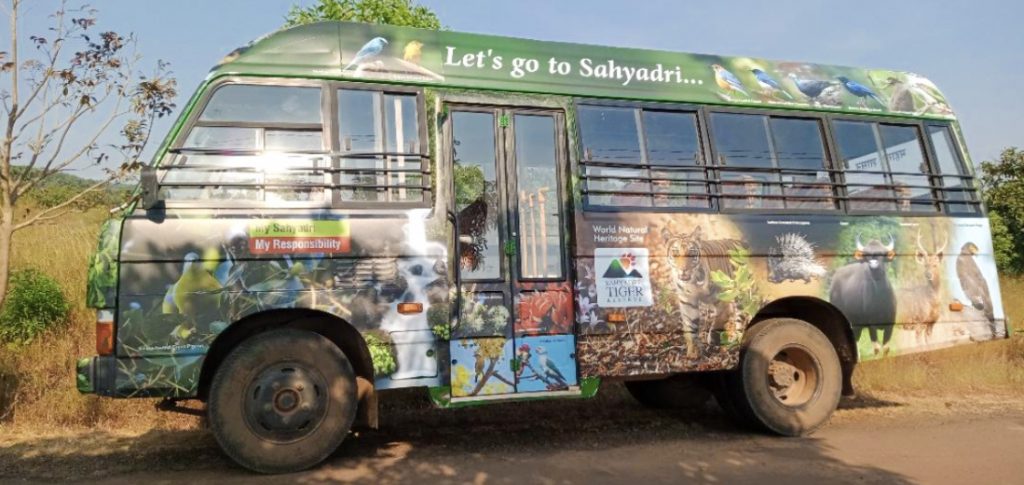
The centuries old historic fort of Prachitgad (near the Patharpunj plateau), considered to be the crown jewel of Sahyadri, is in the midst of the forest area of Chandoli National Park and is often visited by trekking enthusiasts. It is also near this fort that the Varana River originates and flows through the Chandoli National Park. The Varana and Koyna Rivers are the lifelines of the entire Chandoli ecosystem. The reservoir of the Varana Dam built on the Varana River is called Vasant Sagar, which is home to large crocodiles!
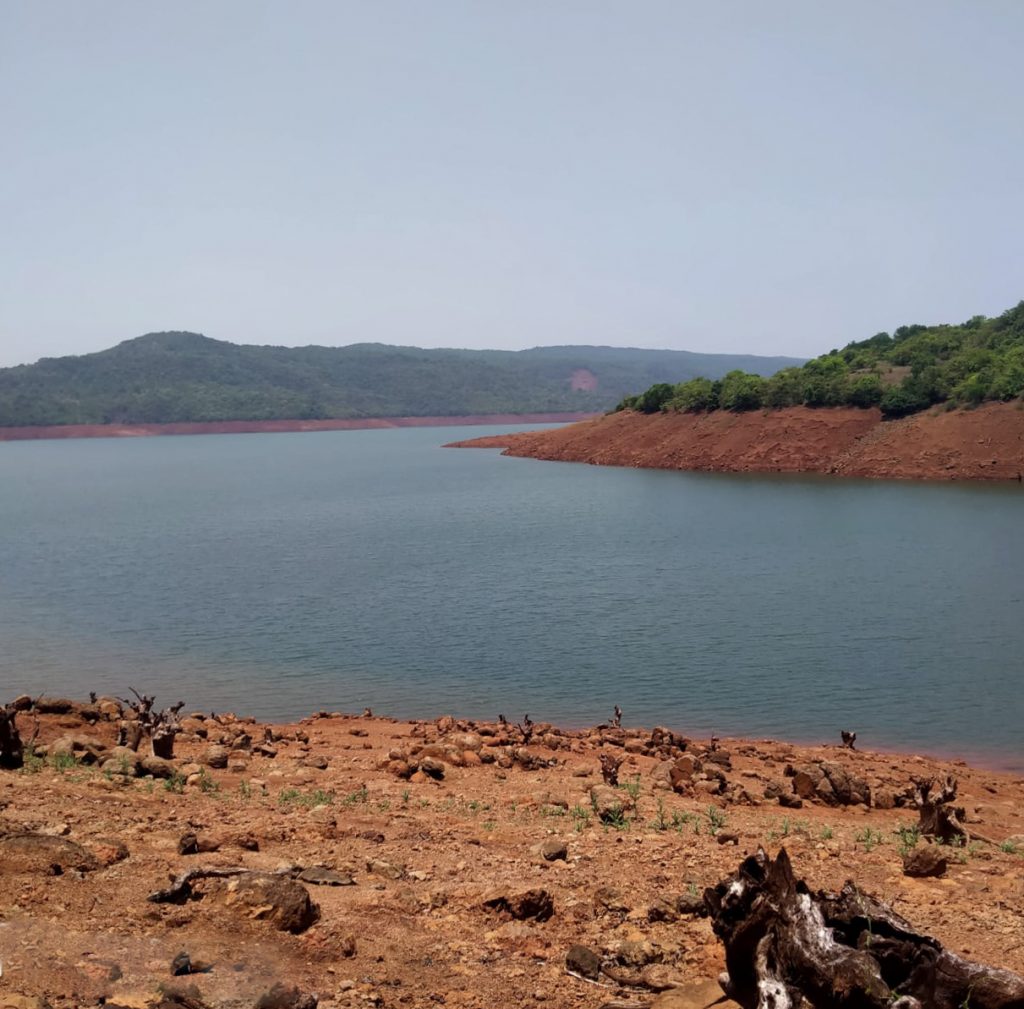
Among the temples in the Chandoli forest region, the one I find most intriguing is the Janai devi temple in Janai wadi village. The story of Janai devi is fascinating. A Dhangar (a sub-caste of herders) went to his farm in Karda Valley. After preparing his farm for paddy plantation, he stacked fodder leaves from some trees in a bundle to take back home for his animals. Carrying the bundle on his head, he started his journey. As he kept walking, the bundle on his head kept getting heavier and he started feeling extremely tired. Sitting under the shade of a tree, he took the bundle off his head. He walked a little ahead and found a small rivulet to drink water from, after which he returned to the shade of the tree. After resting for a while, he decided to leave for home again. He tried to pick up the bundle, but he could not move it despite a lot of effort. He untied the knot of the bundle to see why he was unable to move it. To his astonishment, he saw an idol of Janai devi tucked inside the bundle. He installed the Janai devi idol at the same spot. He bathed the idol with the cool water from the rivulet and started worshiping Janai devi every day.
After a few months, the herder and a few folks from a nearby village dug a well closer to the temple with the help of an iron rod. But when they went to fetch water from the well for worshiping Janai devi, they were shocked to see the tank filled with red insects and the water had become red too! They then worshiped the goddess and kept kaul (a ritual to determine whether the deity’s blessings are with you in a certain task). Janai devi gave a kaul indicating that she would never let water from the man-made well be used for her worship because her idol is not carved by a human but is self-made. So the well was closed up. It is said that Janai devi protects the temple and the surrounding area from thieves. Today, the entire land in the Janai devi temple area is part of Sarjabai Ghatge, a local resident’s estate. Idols of snakes, elephants, Ganesha and various deities emerging from a tree called Gawanda located in front of the Janai devitemple can be found.


If you proceed ahead from the Nandoli check post, you will be greeted by a huge hundred-years-old mango tree called Jani cha Amba(Jani’s mango tree) next to the dense forest. This tree is considered to be a landmark for reference by passers-by. Legend has it that a Dhangar (herder) woman named Jani used to sit under the mango tree and hold a panchayat (community court) to deal with local disputes. During the pre-independence era, the gramsevak (village secretary), talathi (village accountant), and kotwal (chief police officer) used to call everyone and hold meetings under this mango tree. There is a big watchtower near Jani Cha Amba. You can stand on top of the tower and observe the wildlife in the surrounding area.

Jaani’s Mango Tree. Photo: Mahadu Chindhu Konder 
Watchtower near Jaani cha Amba. Photo: Dhaklu Gawde
A little ahead of Jani cha Amba is a lapan ghar (a hiding place or safe house), which has a water point next to it where wild animals and birds come to quench their thirst. Sitting in this hideaway, you can observe the animals and birds coming to the water point without any fear. From there, when you move towards Zolambi, there is an 18th century Vitthalai temple. The temple is old and now in ruins, but you will find beautiful carvings on its wooden pillars. Further ahead, near Zolambi sada (plateau), there are natural bear caves. Many-a-times, other animals too take refuge in these caves.
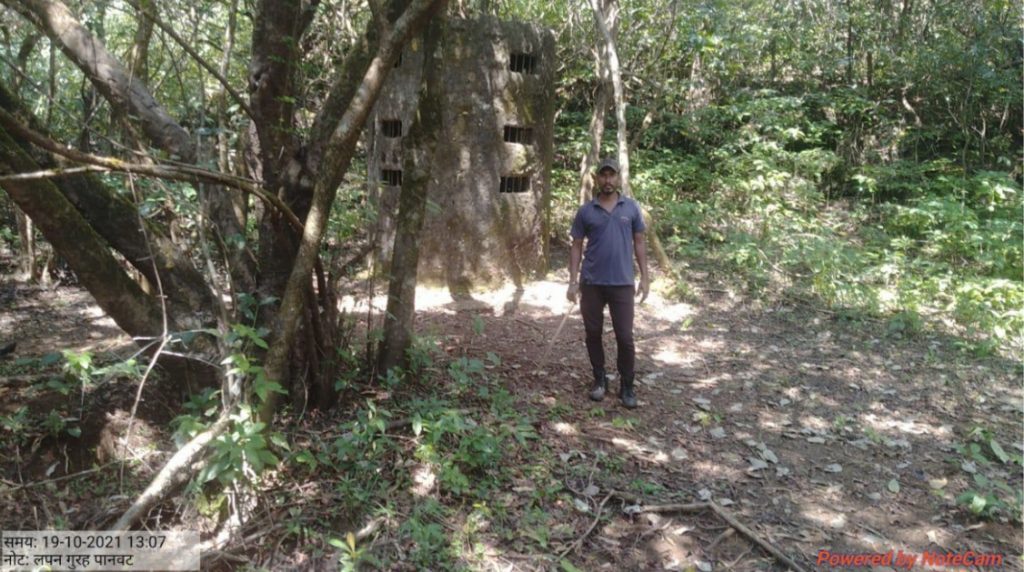
Challenges of living in a National Park and conservation efforts underway
Chandoli is Sahyadri’s wonderful dream. A walk in the dense forest of Chandoli will make you appreciate its beauty and biodiversity. For residents in villages in and around Chandoli National Park though, life has not been devoid of challenges. Ever since the construction of Varana Dam was approved in 1975, and later Chandoli was declared as a Sanctuary and then a National Park, numerous villages of Varana Valley and Chandoli Sanctuary such as Nandoli, Zolambi, Takwe have disappeared and village folks have been resettled elsewhere.
At present, only two villages, Khundlapur Dhangarwada (Sangli district) and Kasni Dhangarwada (Satara district) are part of the core zone. There is a constant struggle and conflict between wildlife and humans. Wild animals (wild boar, leopard, gaur) cause huge damage to paddy fields. The Forest Department has been trying to find a solution in order to protect the farms of the villagers. But there has been no proper resolution till date. Fortunately, wild animals like gaur and leopard have not attacked people in these two villages. But village people say that domestic animals like calves, goats and buffaloes that go to graze in the forest have been attacked.
I too have had some interesting and spine-chilling experiences of wildlife sightings. I remember the first time I saw a herd of gaurs(Indian bison), I mistook them for buffaloes! It was a cold winter Saturday morning. I left for school prior to sunrise with my assistant teacher Madhav Pawar for the morning session at the school in Khundlapur Dhangarwada. We were passing through the winding road on the bike when we suddenly saw a herd of gaurs feeding on grass and leaves on the sides of the road. I wondered, who could be grazing their buffaloes so early in the morning? We turned around and stopped at a little distance, observing those animals for a while. Their limbs looked white from the knees down. We then realized that such massive animals could not be buffaloes. We described those animals to some village folks and they told us that those were gaurs. Now I’m used to the sighting of gaurs every once in a while.

Despite all these challenges, the village folk in this region participate in efforts for conservation of the Chandoli forest as well as cultural activities. The Forest Department has been implementing various rules and organizing awareness programs at village level for wildlife conservation such as the Axe Ban, awareness about forest fire, and Vanyajeev Saptah(Wildlife Week) from 1st to 7th October. Our school in Khundlapur too runs various initiatives for environment conservation, nature study and awareness. We recently collaborated with the Forest Department to take students on a safari in mini-buses on the occasion of the Vanyajeev Saptah to give students an opportunity to experience wildlife tourism. All living beings on Earth have the right to live; no one can take it away. However, the village folk often expect safety for themselves, their farms, and their domestic animals, and these various initiatives will hopefully help them find solutions to their problems.
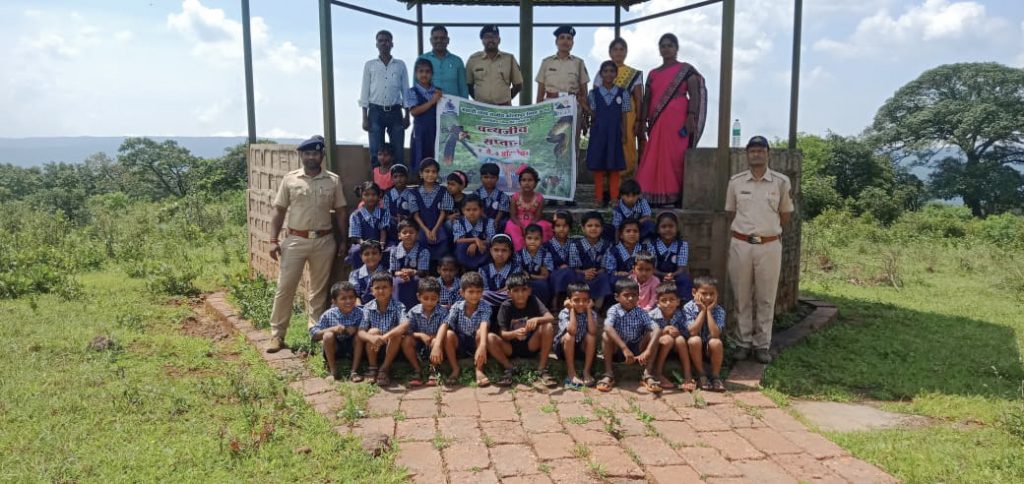
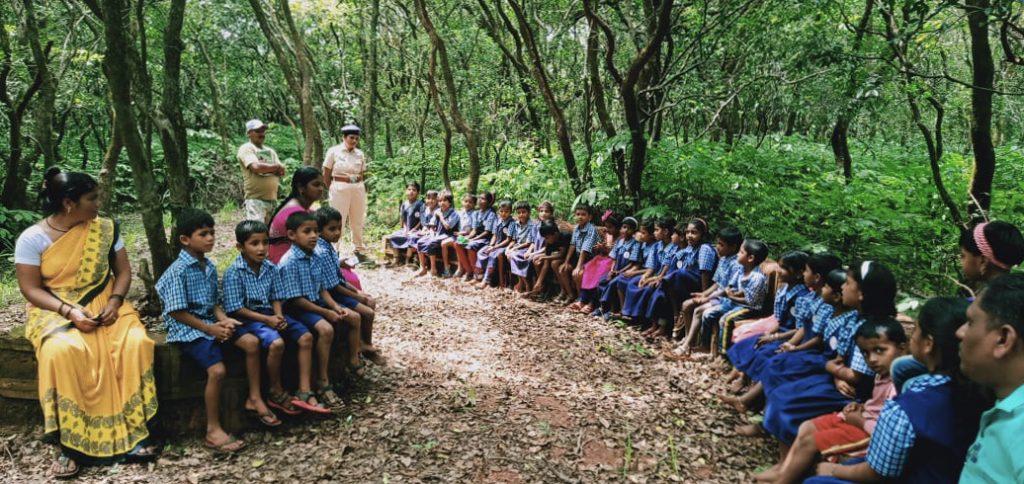
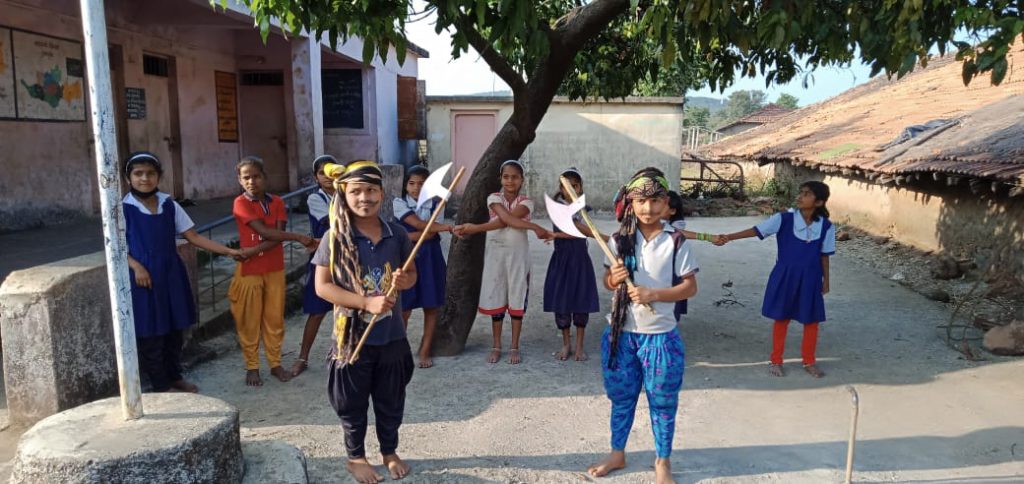
The beauty and simplicity of life in Chandoli
Besides wildlife and adventure, if you want to experience the real rural life and culture during your visit to Chandoli, you must visit the Mauje Khundlapur village. With 75 families and a population of 450-500, this village is a symbol of great thinkers. Late Shree Tukaram Sayaji Gawde set an example for the village by starting a movement to rid the village of alcohol addiction. In his memory, the village folk of Khundlapur have constructed his statue and established a memorial in the main square.
The village received an award for de-addiction in Pune on 30th January 2003. In March 2006, the village received the Nirmal Gram Award in Delhi for full sanitation coverage. In 2008, the honor of Tantamukti (free from conflicts) was awarded to the village at Sangli. During the COVID-19 pandemic, there wasn’t a single coronavirus-infected patient in the village. Khundlapur village thus earned the honor of being a COVID-free village in the Sangli district.
It has been a wonderful experience witnessing the beauty of the culture and tradition of Mauje Khundlapur village. In this village, one can see harmony and unity of the residents. They participate in each other’s happiness. Every year, on the first Saturday after Hanuman Jayanti, a ritual is performed in the village for alcohol prohibition. On this day, all the villagers and guests have dinner together in the evening. For entertainment, a spiritual quiz is staged pitting the participating groups against one another in a bhajani bharud (Marathi drama song) contest. One group asks a question/riddle and the other group solves it through acting and musical performances. The group that solves all the riddles is rewarded and, in the end, both the groups are felicitated.
Every year during the Dussehra festival, members of every family in Khundlapur village prepare kheer (dessert made from milk and rice) in their homes. They offer the kheer to the village deity and then eat it together. Other cultural programs like fasting for Suryanarayana (Sun god), a puja (worship) for alcohol ban, Ninai devi Kalanatya Bhajani Mandal are celebrated in the village every year.

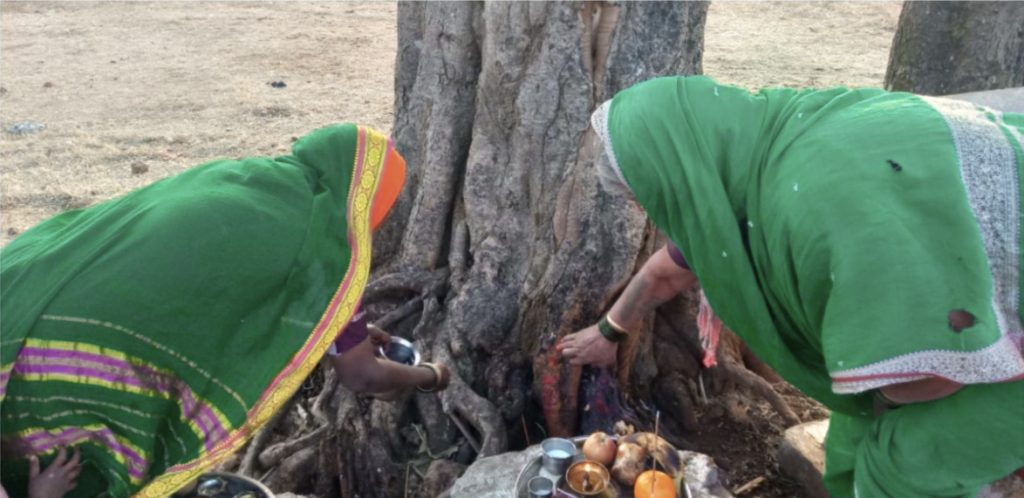
It is said that God created Heaven, Earth, and Hell. No one can know whether Heaven and Hell really exist. But in Chandoli, you can experience the green thickets adorned with blooming flowers and fruits, illuminated by the golden rays of the morning sun and dim crimson glow of the setting sun finally disappearing behind the hills for some rest, to the chirping of birds and calls of animals. This surreal beauty of nature, and the simplicity of Chandoli’s rural lifestyle are certainly nothing short of Heaven.
Meet the storyteller







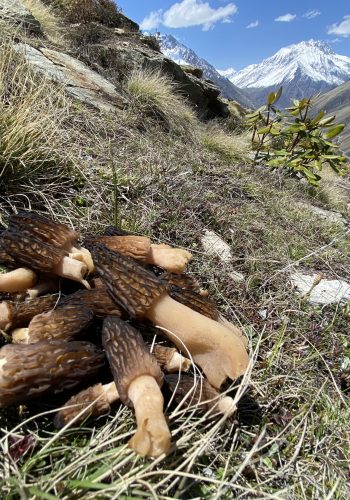
Hatsoff to rural,natural story teller Mahadu Kondar.
The best teacher(Guruji ) for Environmental awareness & conservation programm.Best Wishes . 👍🌹🙏